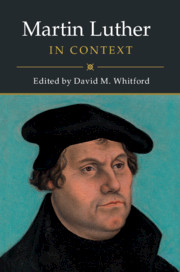Hamm, Berndt. “
Die 95 Thesen – ein reformatorischer Text im Zusammenhang der frühen Bußtheologie Martin Luthers.” In
Der frühe Luther. Etappen reformatorischer Neuorientierung, edited by
Hamm, Berndt,
90–
114.
Tübingen:
Mohr Siebeck,
2010. [“The Ninety-Five Theses: A Reformation Text in the Context of Luther’s Early Theology of Repentance.” In
The Early Luther: Stages in a Reformation Reorientation, edited by
Hamm, Berndt, translated by
Lohrmann, Martin J., 85–109. Grand Rapids: Eerdmans, 2010.]
Google Scholar 


